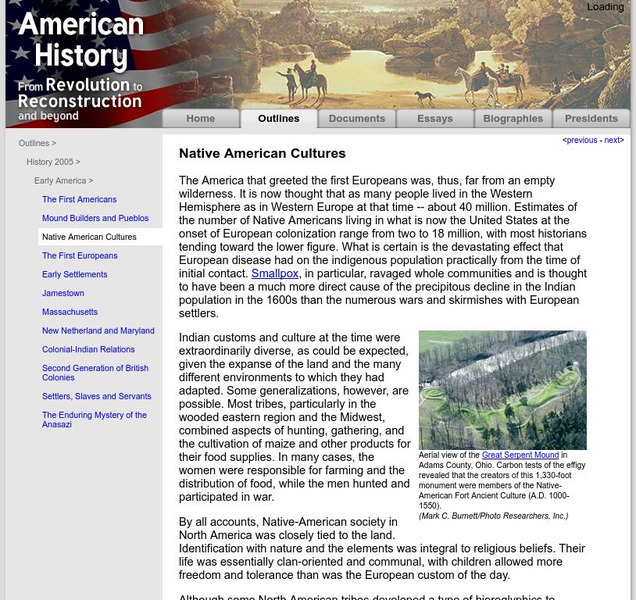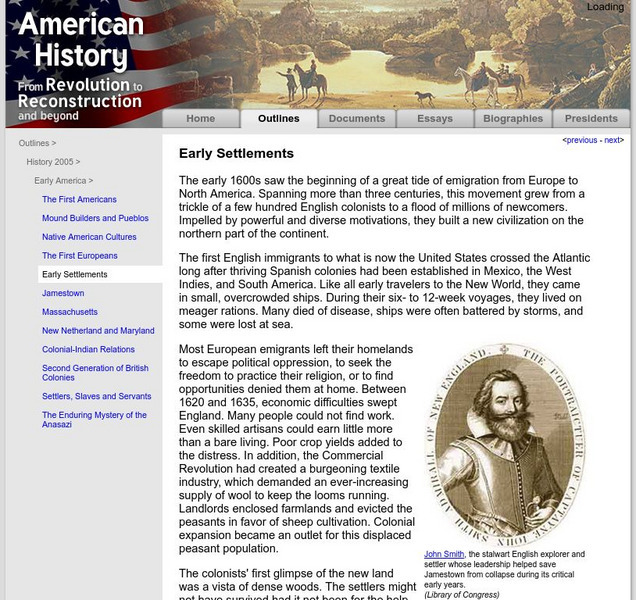Curated OER
: "Synthesizing Content on a Continuum" Activity: Developing Effective Communication
Students express their opinions on the danger from HIV. They study appropriate speaking techniques and become aware what it feels like to learn that they have been infected with an incurable, fatal disease. The share personal...
Curated OER
Backward Lesson
Students view a copy of the painting "Last Moment of John Brown (1884). They discuss the content and composition of the painting. Important questions to be answered during the discussion are included with the lesson. They write an...
Curated OER
Three Days at Gettysburg
Eighth graders discuss why the Battle of Gettysburg was important to the Civil War. In groups, they identify the major events of each day of the battle. They analyze how the battle changed the direction of the war and discuss the outcome.
Curated OER
The Christmas Train to Ft. Lincoln
Students solve the mysteries of why Karl Vogt and Erich Braemer were on the Christmas Train. They review the definitions of the terms constitutional, human rights, due process, discovery, and the writ of habeas corpus. They review the...
Curated OER
Path Map for the Lake Bonneville Flood
Students use a digital atlas of Idaho to explore the effects of the Lake Bonneville Flood. They become familiar with how floods shape our earth and change landscapes. Students graph a a timeline of the rise and fall of Lake Bonneville.
Curated OER
Maine
For this Maine reading comprehension worksheet, students read a 2-page selection regarding the state and they answer 10 true or false questions pertaining to the selection.
Curated OER
Ybor City Historic District
Students analyze the role cigar making played in Ybor City. They examine how cigars are made and the different societies who helped immigrants keep their identify. They compare and contrast their own community to Ybor City.
Curated OER
Philadelphia's Important Contribution to the Lewis and Clark Expedition
Students analyze a primary source document (Jefferson's secret letter to Congress) and identify its objectives through the aid of focus questions. They complete a graphic organizer and write an article summarizing Philadelphia's...
Curated OER
1668 Map of Newark Activity
Eleventh graders read a map for historical information, decipher a map legend and symbols, and expand their knowledge of a historic time.
Curated OER
Trekking to Timbuktu
Pupils view a television show to provide a context for conducting research into the location and culture of Timbuktu. The students complete a report on the subject in the form of a research paper.
Curated OER
Observing Capitalization Rules
In this capitalization learning exercise, students complete three activities that help them follow the rules for capitalization in their writing.
Curated OER
Hull of a Ship
Fifth graders engage in this introductory unit lesson. A bulletin board for the unit be started, Colonial Notebooks be presented to each student, and a pre-test on colonization be administered.
Curated OER
Liberty Ships
Students complete a variety of activities that go along with the study of and possible fieldtrips to see various Victory Ships along the Pacific and Atlantic coasts of the U.S.
Curated OER
Life and Times, Developing a Chronology
Young scholars review the career and life of Ernie Pyle as an example of a biography in context. They consider how a chronology maps out the events in the life of an individual in the context of other events that were occurring at the...
Curated OER
Australian Travel Adventure
Seventh graders are introduced to the states and territories within Australia. Using the internet, they bookmark sites and take notes on what they want to share with their classmates. They also complete a map study on the country to...
Duke University
Conscience of a Nation: John Hope Franklin on African American History
An exhibition on African-American history that is inspired by the work of John Hope Franklin (1915-2009), an African-American scholar who studied the historical roots of racial prejudice. The exhibit presents primary documents, texts,...
University of Groningen
American History: Outlines: Native American Cultures
The America that greeted the first Europeans was, thus, far from an empty wilderness. It is now thought that as many people lived in the Western Hemisphere as in Western Europe at that time -- about 40 million. Estimates of the number of...
CommonLit
Common Lit: Text Sets: Native American History
This is a collection of 27 Grade-Leveled texts (4-12) on the topic Native American History. Before European settlers came to North America, millions of native people lived in many unique societies. Explore the history of Native Americans...
Smithsonian Institution
National Museum of Natural History: North American Mammals
The National Museum of Natural History provides users the opportunity to create personalized field guides of North American mammals based on a wide variety of search options.
Other
University of Exeter: Money in North American History
This resource provides information about money in North America from Wampum to electronic transfer.
Stephen Byrne
History for Kids: North American History
History reference page for elementary students provides an overview of early American history from the age of Columbus through the Civil War and abolition of slavery. Includes links to teacher resources.
University of Groningen
American History: Outlines: Early Settlements
The early 1600s saw the beginning of a great tide of emigration from Europe to North America. Spanning more than three centuries, this movement grew from a trickle of a few hundred English colonists to a flood of millions of newcomers....
University of Groningen
American History: Outlines: The Enduring Mystery of the Anasazi
Time-worn pueblos and dramatic cliff towns, set amid the stark, rugged mesas and canyons of Colorado and New Mexico, mark the settlements of some of the earliest inhabitants of North America, the Anasazi (a Navajo word meaning "ancient...
University of Groningen
American History: Outlines: The First Europeans
The first Europeans to arrive in North America -- at least the first for whom there is solid evidence -- were Norse, traveling west from Greenland, where Erik the Red had founded a settlement around the year 985. In 1001 his son Leif is...























